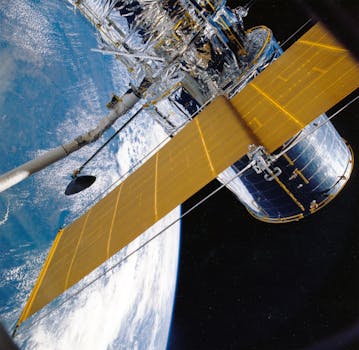The Rise of Mega-Constellations: Latest Updates in Satellite Telecommunications

The Rise of Mega-Constellations: Latest Updates in Satellite Telecommunications
The Rise of Mega-Constellations: Latest Updates in Satellite Telecommunications. The rise of mega-constellations is revolutionizing the field of satellite telecommunications, with numerous companies launching thousands of satellites into low Earth orbit to provide global internet coverage. This new era of satellite technology is expected to bridge the digital divide, provide connectivity to remote areas, and offer a range of services including broadband internet, navigation, and Earth observation.
Introduction to Mega-Constellations
Mega-constellations refer to a large group of satellites that are launched into low Earth orbit to provide a specific service or set of services. These satellites are typically smaller and less expensive than traditional satellites, and are launched in large numbers to provide a high level of coverage and redundancy. The concept of mega-constellations has been around for several decades, but it is only in recent years that the technology has become viable and cost-effective.
One of the key drivers of the rise of mega-constellations is the growing demand for global internet coverage. With the increasing use of mobile devices and the Internet of Things (IoT), there is a need for a reliable and high-speed internet connection that can reach remote and underserved areas. Mega-constellations are well-placed to meet this demand, as they can provide a high level of coverage and redundancy, and can be launched at a lower cost than traditional satellites.
Key Players in the Mega-Constellation Market
There are several key players in the mega-constellation market, including SpaceX, OneWeb, and Amazon Kuiper Systems. These companies are launching thousands of satellites into low Earth orbit to provide a range of services, including broadband internet, navigation, and Earth observation. SpaceX, for example, has launched over 1,000 satellites as part of its Starlink constellation, which is expected to provide global internet coverage by the mid-2020s.
OneWeb has also launched several hundred satellites as part of its constellation, which is expected to provide global internet coverage by the end of 2022. Amazon Kuiper Systems has announced plans to launch over 3,000 satellites as part of its Kuiper constellation, which is expected to provide high-speed internet coverage to remote and underserved areas.
Challenges and Opportunities
While the rise of mega-constellations presents a number of opportunities, it also poses several challenges. One of the key challenges is the risk of space debris, as the launch of thousands of satellites into low Earth orbit increases the risk of collisions and the creation of space debris. There is also a risk of radio frequency interference, as the large number of satellites in low Earth orbit can interfere with other satellite systems and ground-based systems.
Despite these challenges, the rise of mega-constellations is expected to have a significant impact on the field of satellite telecommunications. It is expected to bridge the digital divide, provide connectivity to remote areas, and offer a range of services including broadband internet, navigation, and Earth observation. It is also expected to create new opportunities for businesses and individuals, as the increased availability of high-speed internet and other services enables new applications and use cases.
Conclusion
In conclusion, the rise of mega-constellations is revolutionizing the field of satellite telecommunications, with numerous companies launching thousands of satellites into low Earth orbit to provide global internet coverage. While there are several challenges associated with the rise of mega-constellations, including the risk of space debris and radio frequency interference, the opportunities presented by this new era of satellite technology are significant. As the technology continues to evolve and improve, it is expected to have a major impact on the field of satellite telecommunications, and to create new opportunities for businesses and individuals around the world.



